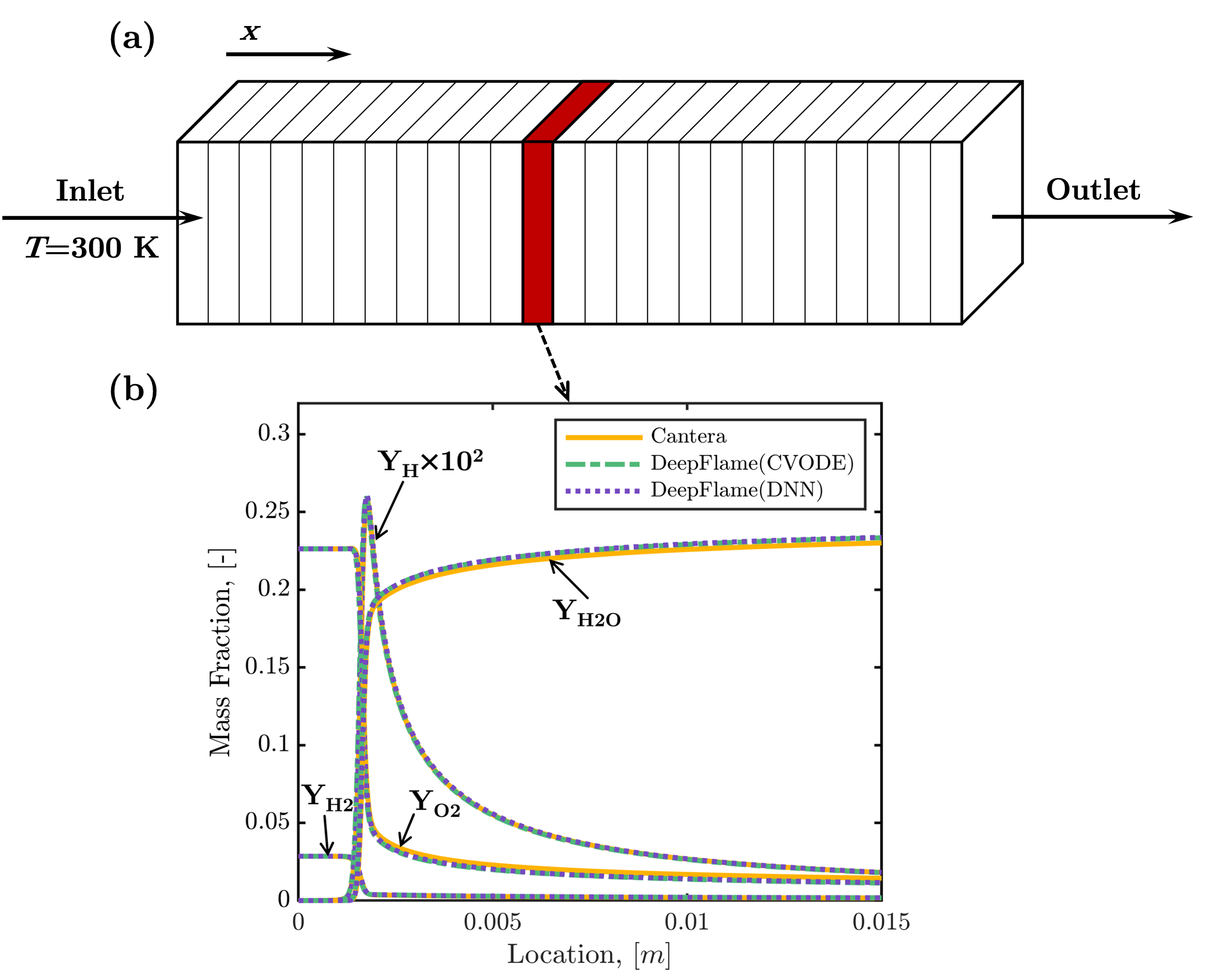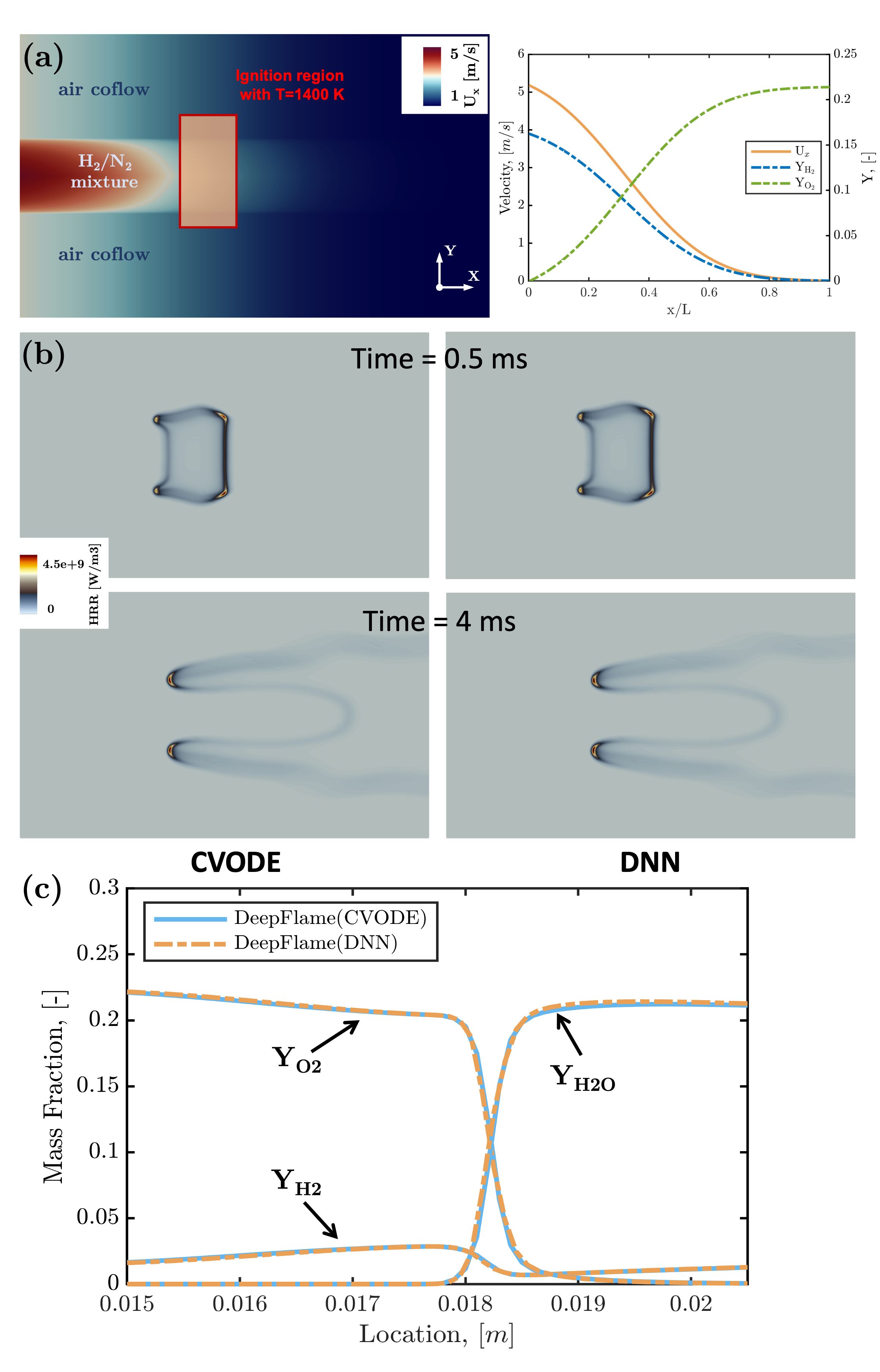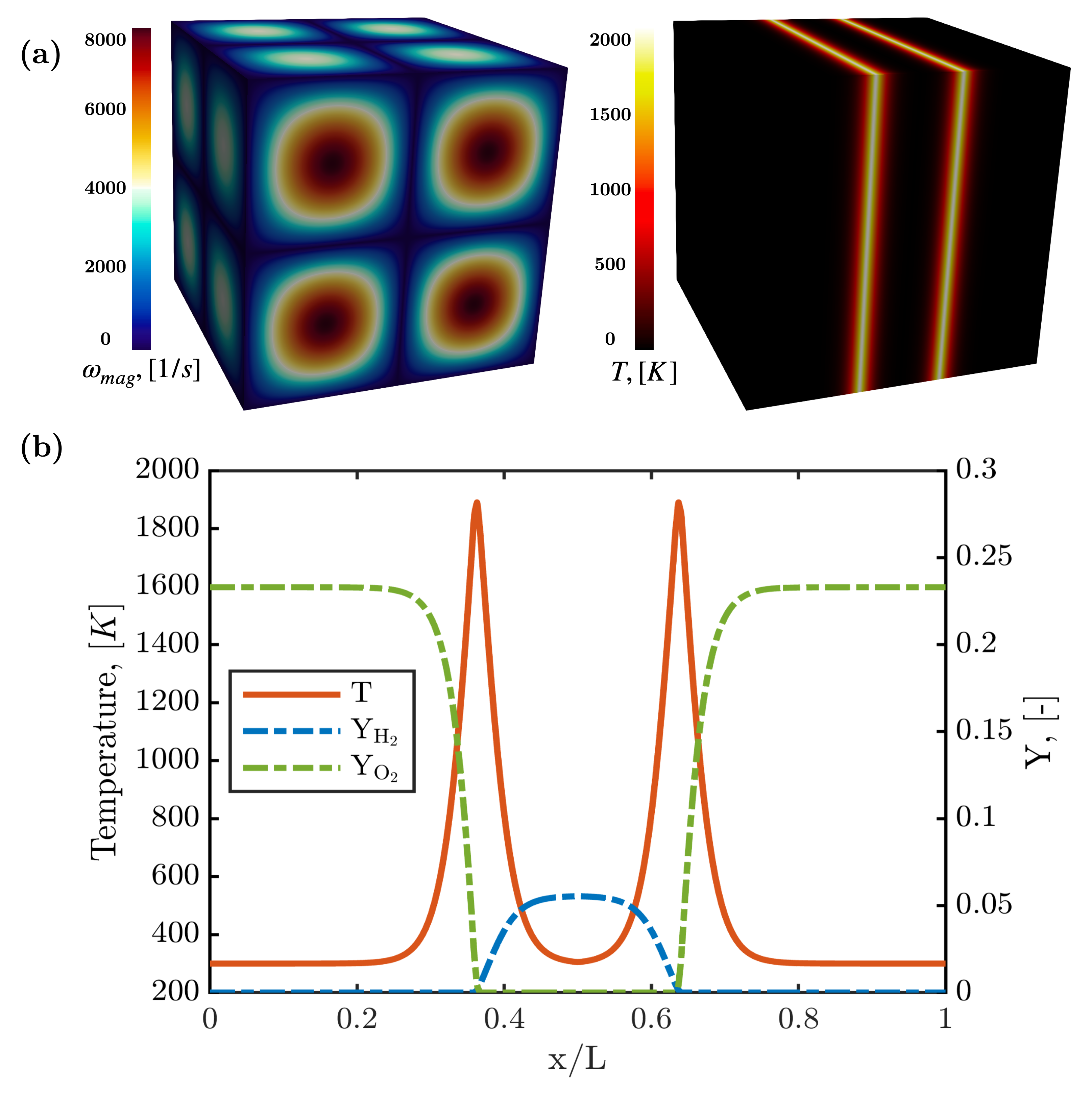2. dfLowMachFoam
2.1. One-Dimensional Planar Flame
Problem Description
The case simulates the steady-state 1D freely-propagating flame. The results are able to catch the flame thickness, laminar fame speed and the detailed 1D flame structure. This case demonstrate that the convection-diffusion-reaction algorithms implemented in our solver are stable and accurate.
Computational Domain length | 0.06 m |
Mixture | Hydrogen-Air |
Equivalence Ratio | 1.0 |
Inlet Gas Temperature | 300 K |
Output

Numerical setup of one-dimensional premixed flame and the detailed flame structure obtained by our solver
2.2. Two-Dimensional Jet Flame
Problem Description
This case simulates the evolution of a 2D non-premixed planar jet flame to validate the capability of our solver for multi-dimensional applications.
Computational Domain size (x) | 0.03 m * 0.05 m |
Jet Composition | H2/N2= 1/3 (fuel jet), Air (co-flow) |
Initial Velocity | 5 m/s (fuel jet), 1 m/s (co-flow) |
Initial Gas Temperature | 1400 K (ignition region), 300 K (other area) |
Output

Simulation results of the two-dimensional jet flame.
The initial condition and the evolution of the jet flame are presented in this figure.
2.3. Three-Dimensional reactive Taylor-Green Vortex
3D reactive Taylor-Green Vortex (TGV) which is a newly established benchmark case for reacting flow DNS codes is simulated here to evaluate the computational performance of our solver.
The initial fields are set according to a benchmark case established by Abdelsamie et al. The figure below shows contours of vorticity magnitude and temperature as well as the x-direction profiles of species at initial time.

Initial contours and profiles of vorticity magnitude, temperature, and species mass fraction for the reactive TGV
Output
The developed TGV are displayed in the figures below.

Contours and profiles of temperature and species mass fraction at t = 0.5 ms
Reference
A.Abdelsamie, G.Lartigue, C.E.Frouzakis, D.Thevenin, The taylor-green vortex as a benchmark for high-fidelity combustion simulations using low-mach solvers, Computers & Fluids 223 (2021): 104935.